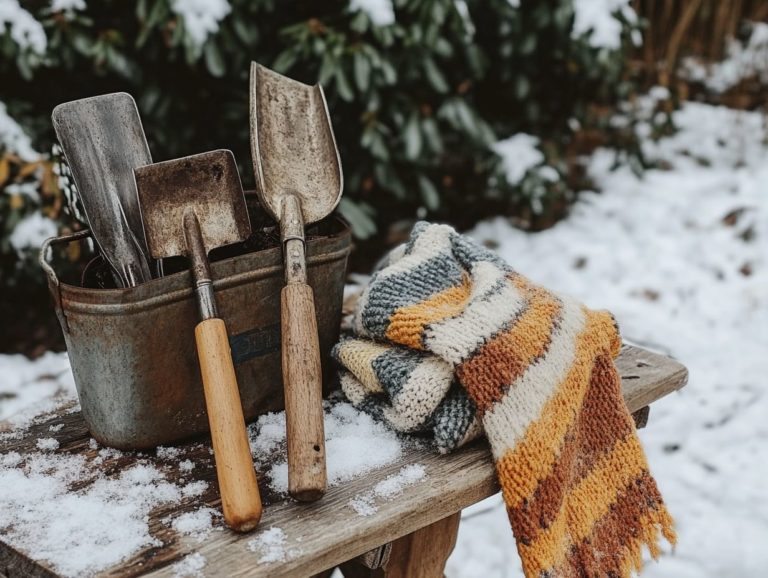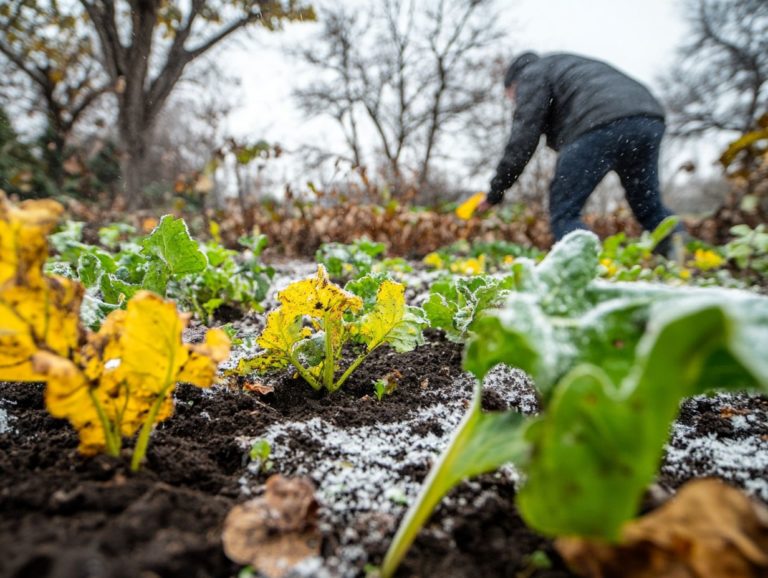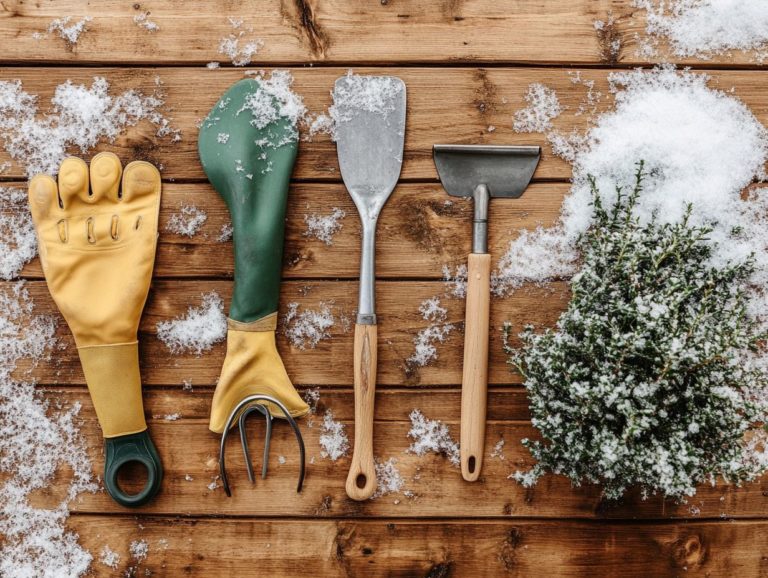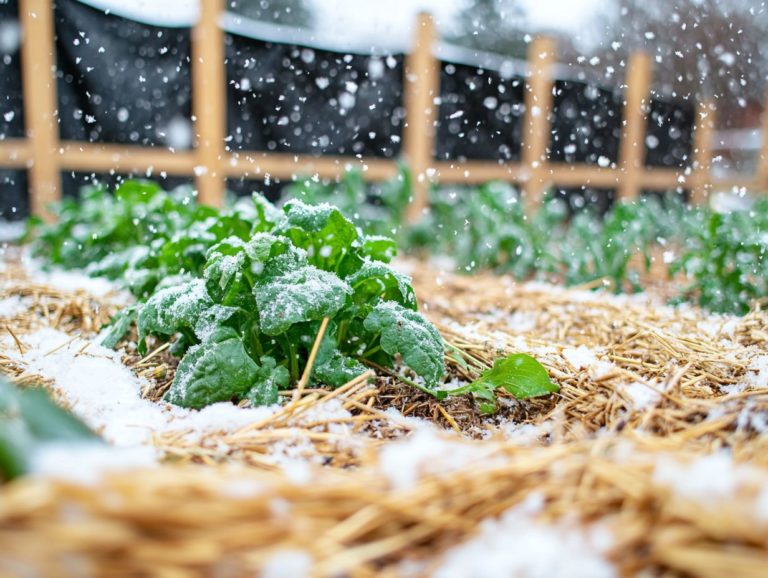Winter Gardening Myths: Debunked
Winter gardening is often clouded by misconceptions. Many assume that the colder months spell the end for plant life.
From misunderstandings about sunlight requirements to the belief that winter gardens can only thrive in frigid climates, these myths can discourage even the most dedicated gardeners.
This article aims to debunk some of the most prevalent winter gardening myths and offer tips to ensure your garden flourishes, regardless of the chill in the air.
Get ready to uncover the amazing beauty and potential of winter gardening!
Contents
Key Takeaways:

- Winter gardening is not just possible but also beneficial for your garden’s health.
- Plants can thrive in winter even without direct sunlight, as long as they receive enough indirect light.
- Winter gardening is not limited to cold climates; even in warmer regions, you can still grow winter crops.
What are Winter Gardening Myths?
Winter gardening is often clouded by misconceptions, with many believing that growing plants during the chilly months is a lost cause.
By understanding the various myths surrounding winter gardening, you can empower yourself to explore the exciting possibilities of growing organic vegetables and indoor plants, even in harsh climates.
This guide will debunk those common myths and unveil effective methods for successful winter gardening. You’ll maintain a vibrant garden landscape despite the colder temperatures.
In reality, winter gardening offers numerous benefits, especially for those committed to sustainable practices.
You can enjoy a fruitful harvest by selecting frost-resistant varieties that thrive in lower light and cooler temperatures. Proper plant care is crucial, emphasizing the importance of protecting roots and optimizing light exposure.
If you re facing winter challenges, don’t miss out on vital techniques like composting and managing soil health. These practices ensure nutrients remain bioavailable as temperatures drop.
With a bit of knowledge and preparation, you can transform winter from a mere season of dormancy into an opportunity for growth and resilience.
Myth #1: You Can’t Grow Anything in Winter
One of the most common myths is the notion that nothing can thrive during the colder months. This often leads many to give up on their gardening pursuits altogether.
However, with the right techniques and a solid grasp of plant requirements, you can absolutely grow a vibrant array of organic vegetables and indoor plants, even when the temperatures drop.
Debunking the Myth
To dispel the myth that winter is a barren season for gardening, it’s essential to explore several effective methods that enable you to successfully grow plants even in the chillier months.
By embracing techniques like container gardening, you can easily care for your plants while shielding them from harsh weather conditions.
Utilizing organic fertilizers enriches your soil, ensuring that essential nutrients are available for flourishing crops.
You can also create a microclimate an area with different climate conditions by implementing windbreaks or row covers, which protect your plants from biting winds.
Certain vegetables, such as kale, spinach, and carrots, thrive remarkably well in winter, relishing the cooler temperatures.
Maintaining proper care practices like ensuring adequate drainage and managing nutrient levels is crucial to prevent issues such as root rot and nurture a thriving garden environment.
Myth #2: Plants Need Sun to Grow in Winter
One prevalent myth is that plants must bask in direct sunlight to flourish. This leads many gardeners to worry that their cherished greens will suffer without it during those shorter winter days.
This perspective overlooks a crucial truth: many plants are remarkably adaptable and can thrive in lower light conditions, growing successfully indoors or in shaded areas.
Debunking the Myth
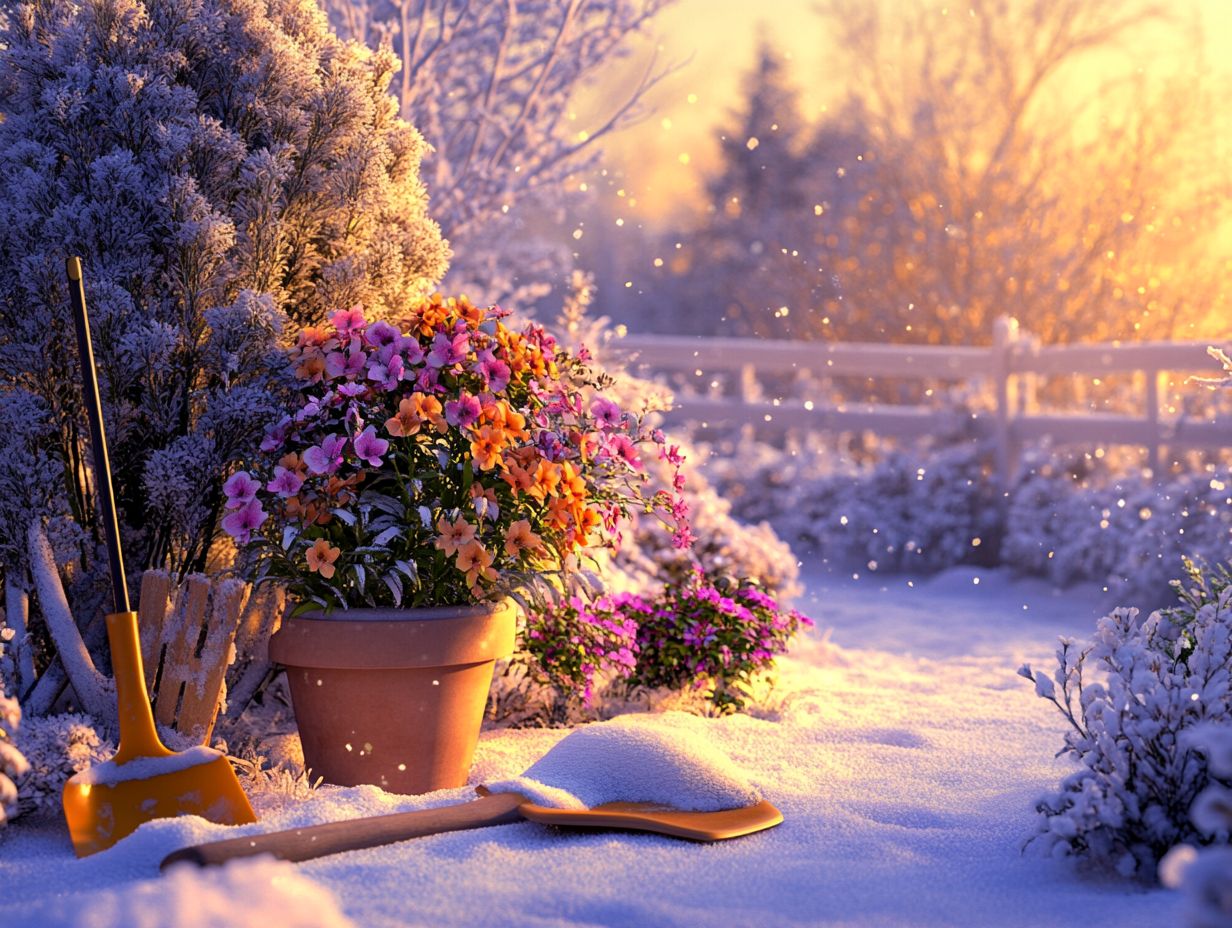
Many plants can thrive in winter without direct sunlight. They adapt to various light conditions.
Several plants can flourish in low-light environments, making them perfect companions for your indoor gardening pursuits. Varieties such as snake plants, pothos, and ZZ plants not only introduce a refreshing touch of greenery to your space but also showcase impressive resilience.
To optimize their growth, it s vital to ensure proper air circulation. Placing your plants in well-ventilated areas helps prevent issues like mold and mildew, which can become problematic in stagnant air. Maintaining a stable temperature between 60-75 F creates an ideal climate for healthy development even when sunlight is limited.
Regularly rotating the pots helps achieve even growth, ensuring that every side of the plant receives sufficient indirect light.
Myth #3: Winter Gardens are Only for Cold Climates
The notion that winter gardens belong solely to cold climates is a pervasive myth that often discourages gardeners from exploring the potential of winter gardening in milder regions.
With the right techniques and a sprinkle of creativity, you can grow a thriving garden, no matter the weather. Embrace the possibilities that winter gardening offers, and watch your landscape thrive even during the chillier months.
Debunking the Myth
Debunking the myth that winter gardens are only for cold climates opens up a world of possibilities for your gardening endeavors. You can use versatile techniques that thrive in milder areas.
By embracing innovative maintenance methods, you can cultivate lush, organic vegetable gardens, regardless of your environmental conditions. Implementing strategies like effective drainage systems ensures that excess water won t stifle plant growth. Meticulous soil preparation creates a nutrient-rich foundation for your vegetables to flourish.
Transform your indoor spaces into green havens; with a little imagination, they can be vibrant micro-environments. This allows you to garden year-round without being at the mercy of the weather outside. With the right approach, even those in temperate regions can enjoy a bountiful winter harvest, reaping the rewards of sustainable gardening.
Myth #4: Winter Gardening is Too Expensive
Many individuals perceive winter gardening as an exorbitant venture, which often discourages them from reaping the benefits of cultivating their own organic vegetables in the chillier months.
This viewpoint overlooks the reality that, with thoughtful planning and strategic resource management, winter gardening can be both economical and fulfilling.
Debunking the Myth
Debunking the myth that winter gardening is prohibitively expensive reveals a wealth of cost-effective tools and methods available to you as an aspiring gardener.
Consider repurposing everyday materials to craft unique containers, or harnessing the benefits of organic fertilizers that are both budget-friendly and immensely advantageous for your plants. There are countless opportunities waiting to be explored.
By implementing innovative growing techniques, such as vertical gardening or creatively utilizing indoor spaces, you can further reduce expenses while fostering healthy plant growth. Embracing these affordable practices allows you to transform your winter gardening experience into a rewarding journey without putting a strain on your budget.
Exploring these alternatives not only helps you cultivate a green thumb but also nurtures a deeper appreciation for nature and sustainable living.
Myth #5: Winter Gardens are Just for Aesthetics
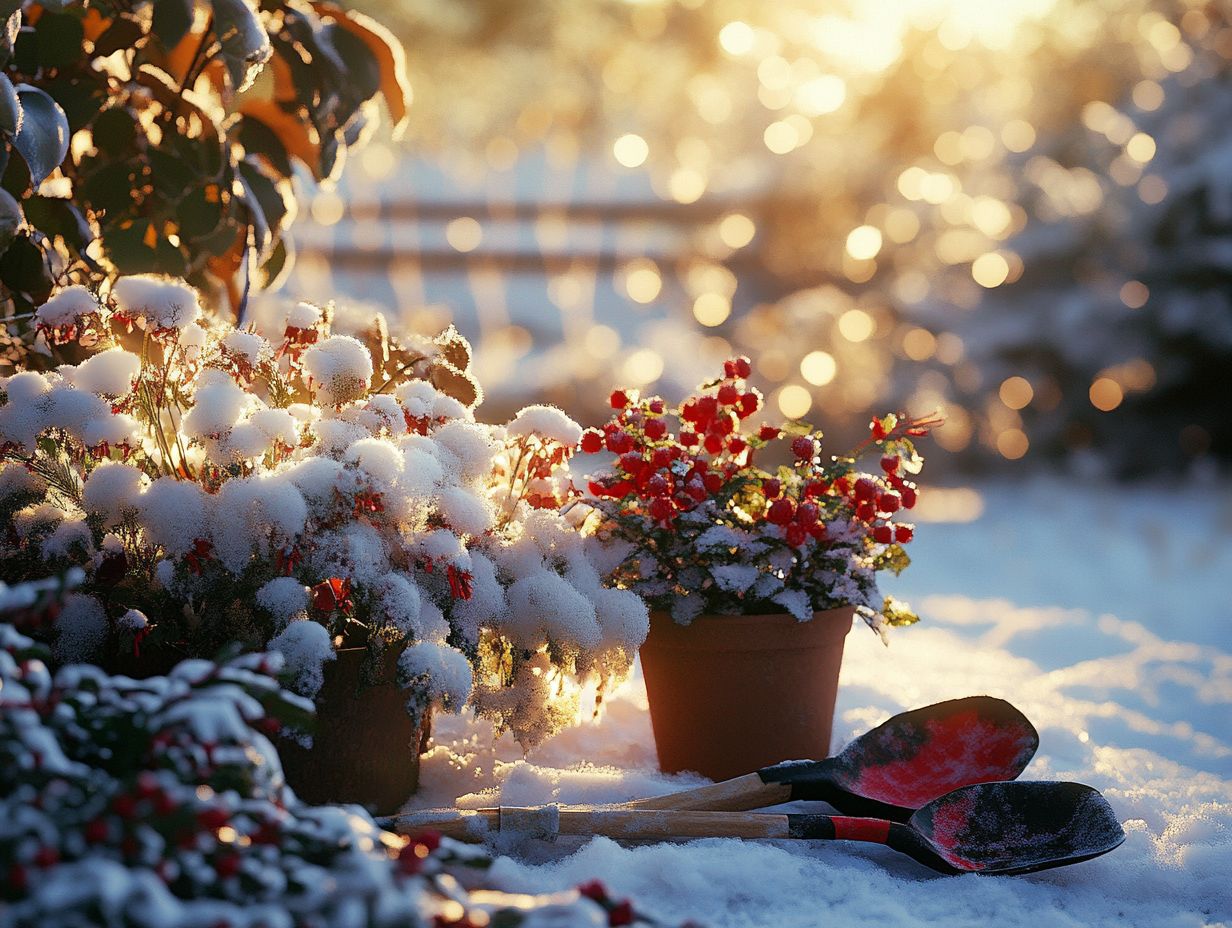
The idea that winter gardens exist solely for visual appeal misses the myriad advantages they offer. Not only can you cultivate nutritious organic vegetables, but these gardens also enhance your overall well-being during the colder months.
Start your winter gardening journey today!
Debunking the Myth
Debunking the myth that winter gardens are merely for aesthetics unveils the numerous benefits they offer to your household, like the luxury of fresh organic vegetables right at your fingertips.
Winter gardening gives you a steady supply of fresh veggies. It also boosts your mood and keeps you active. This practice alleviates stress and instills a rewarding sense of accomplishment as you cultivate your garden during the chillier months.
With careful design, you can transform your outdoor spaces into a harmonious blend of beauty and practicality.
Imagine creating visually stunning gardens with raised beds, vibrant perennial plants, and thoughtful layouts that make harvesting a breeze. These intentional designs turn winter landscapes into functional sanctuaries, ultimately supporting healthier eating habits and a more sustainable lifestyle.
Tips for Successful Winter Gardening
To achieve success in winter gardening, embrace a range of strategies tailored to the distinct challenges of cultivating plants during the colder months. By applying these techniques, you’ll maximize your yields of organic vegetables and ensure your indoor gardens flourish beautifully throughout the winter season.
How to Make Your Winter Garden Thrive
To make your winter garden truly thrive, you need to embrace specific methods that cater to the distinctive needs of plants during this season. This ensures they receive the care and nutrients essential for their survival.
- Start by preparing the soil with natural materials that improve soil to enhance its texture and fertility. This creates a solid base for root growth.
- Be mindful when watering proper techniques are crucial. Avoid over-saturating the soil, but ensure it remains moist enough to foster healthy growth.
- Incorporate organic fertilizers to significantly boost nutrient intake as they release sustenance gradually, benefiting your plants over an extended period.
Monitor temperature fluctuations and ensure proper drainage is in place. These practices support overall plant health, allowing your garden to flourish even in the coldest months.
Watch our video for tips on how to make your winter garden thrive!
Frequently Asked Questions
Can plants survive the harsh winter weather?
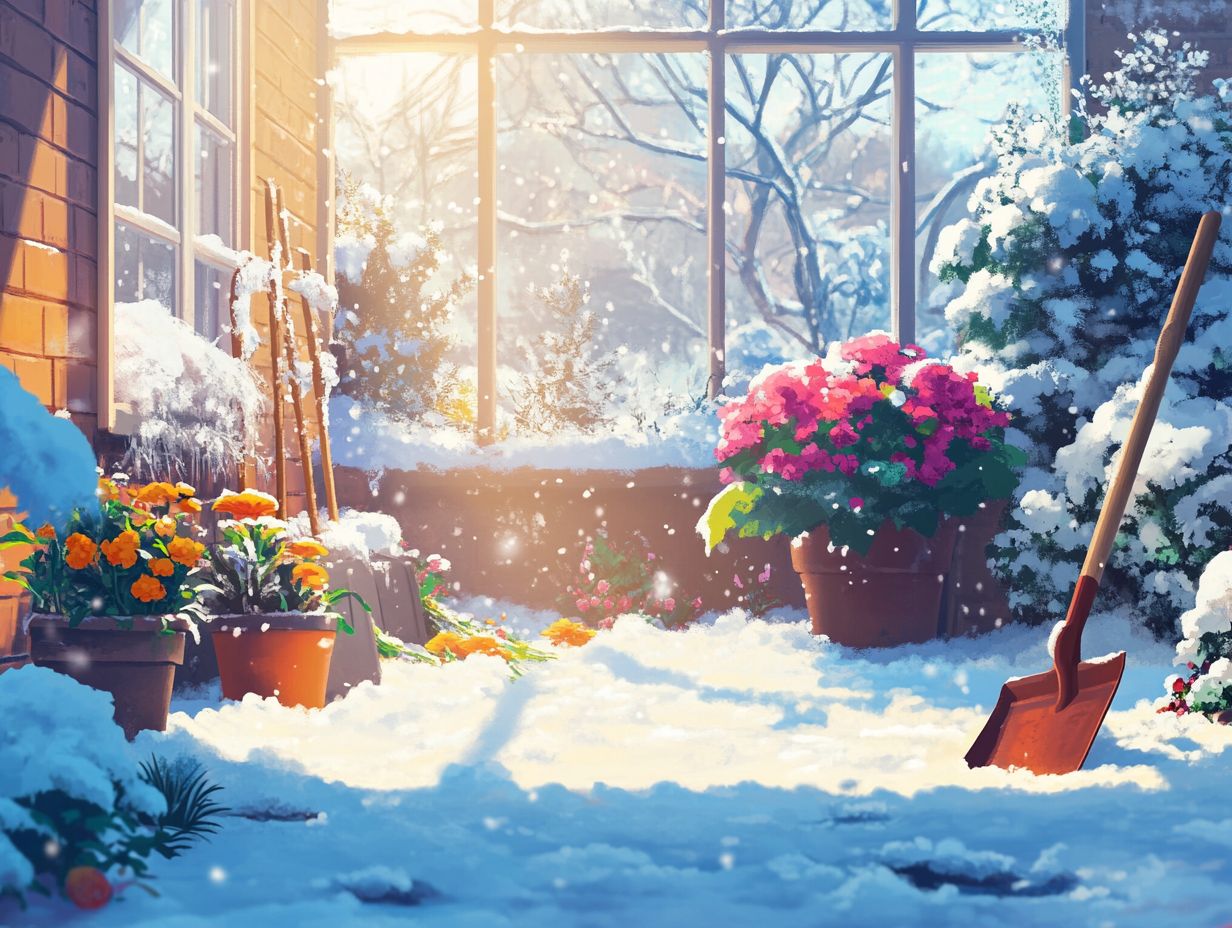
Contrary to popular belief, many plants can actually survive the winter months with proper care and preparation. Some even thrive in the colder temperatures.
Is it necessary to water plants during the winter?
While it may seem counterintuitive, plants still need water during the winter months. However, less frequent watering is necessary due to the slower growth rate and potential for freezing temperatures.
Do I need to cover my plants in winter?
This depends on the type of plant and the severity of the winter weather. Tender plants may need to be covered or brought indoors, while hardier plants such as Brussels sprouts may withstand the cold without extra protection. It s also wise to consider pruning before winter to avoid damage.
Is it a waste of time to start a winter garden?
Not at all! While winter gardening may require some extra effort and planning, it can be just as rewarding as gardening in other seasons. Plus, you can grow a variety of cold-hardy plants that may not survive in warmer months.
Is it true that frost will kill all my plants?
Frost alone does not necessarily mean the end for your plants. Many can tolerate light frost, while others may need protection or may not survive at all. It’s important to research the needs of your specific plants and prepare accordingly.
Don t miss out on the chance to enjoy fresh veggies this winter! Start your own winter garden today and share your experiences in the comments below.
Do I need to fertilize my plants in the winter?
In most cases, you do not need to fertilize your plants during winter. They are in a resting period and require fewer nutrients.
If you are growing winter vegetables or plants that need many nutrients, consider fertilizing them sparingly!

